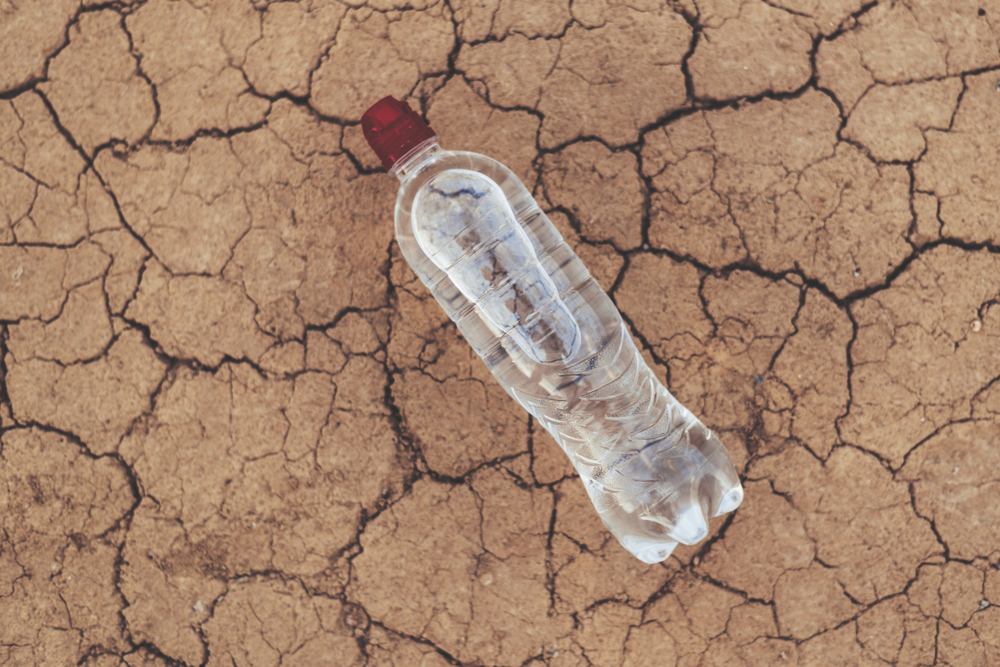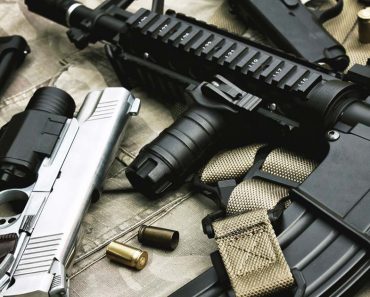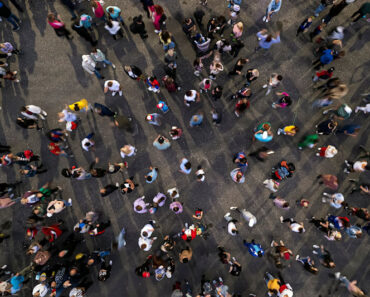Thanks to climate change, heat waves are more frequent in the United States, and they are even starting earlier than before. In fact, major cities across the country have received recent warnings regarding heat waves bringing temps above 100.
Since the frequency of heat waves is only increasing and seeing that power grids are struggling to keep up with the overloads caused by AC units and other cooling systems, it makes sense to learn how to keep our cool and prevent heat disorders from affecting our health.
We are self-reliant folks, and we understand the importance of water, especially during the summer months when water may be in short supply. We store water in our homes and shelters, and we carry it around regardless if we are doing errands, working out, or spending time in nature. Even so, a lot of people neglect the water within their bodies and fail to cover their body’s water needs leading to dehydration and even death.
It is important to learn about the factors that contribute to water loss and acknowledge the signs and symptoms of dehydration. And lastly, we should also learn about water management and no longer take water for granted.
Fluid loss caused by your activity and environment
Temperature and exercise/strenuous work are among the biggest factors that lead to fluid loss. It should be obvious that the hotter the environment you live in and the more intense and lengthier the activity you are doing, the more water your body loses.
We naturally sweat a lot when we are placed in a hot environment and when our body consumes energy due to various activities. However, these are not the only two factors to look out for, and even if you find yourself in a cold and dry environment, your body can still lose a considerable amount of water, and dehydration will definitely occur. We falsely assume that we should mainly replace water loss during hot months, and we ignore the dry winter months since we “don’t need that much water.”
Deconditioning is another factor that depletes your body’s water levels. Being out of shape will make you sweat more than usual, and your body will consume much more energy, causing you to succumb to heat more easily.
Altitude is another key factor that’s hardly being mentioned in survival literature, even though it also contributes to water loss. Getting to higher altitudes will cause your body to perspire more than usual, and your body will lose water through the increased respiration process. The atmospheric pressure from higher altitudes leads to faster water and sweat evaporation, and this is quite noticeable when you find yourself above 5,000 feet or more.
Signs of dehydration

Being aware of the factors that lead to dehydration is important, but it becomes critical to know the signs of dehydration and spot them in time. These obvious signs are thirst and dark-colored urine, but also fatigue which usually occurs during mild dehydration (generally classified as less than 5% of body fluid loss),
The more water your body loses, and if you fail to replenish that fluid loss, you will experience moderate dehydration (classified as 5% to 10% body fluid loss), and the symptoms you feel during mild dehydration will worsen, and you will have an increased heart rate, a decreased urine output and sweating, a weak pulse and a decreased level of alertness, which can become fatal during a survival scenario.
If you would experience severe dehydration (classified as a higher than 10% body fluid loss), your mental state will deteriorate, you will become drowsy, and a higher level of obtundation will set in. Small bumps may appear on your skin (goose pimples), there will be limited output or urine (or it may be absent entirely), and your respiration rate will increase considerably. This is no longer a self-care situation, and you should be seeking medical attention as your vital organs may be damaged permanently.
Replenishing water loss
To estimate how much fluid you need to replace, you can use a simple calculation. The internet can provide a more precise equation for body fluid replacement, but we can keep it simple and easy to follow for everyone. Here’s what you need to do:
1. Divide your body weight in pounds by 2.2 to obtain your body weight in kilograms.
2. Your body is essentially around 60% water, so you need to take your weight in kilograms and multiply it by 0.6 to obtain the liters of water contained by your body. Let’s say you are a 220 pounds male, then the equation for you is 220 pounds divided by 2.2 and multiplied by 0.6, which gives us 60 liters of water for that body weight.
3. Now, if you suffer from mild dehydration (5%) for your body weight of 220 pounds which contains 60 liters of water, you will need to multiply 60 by 0.05, and it will result in 3 liters of water loss you need to replace.
Since you now know what the signs of dehydration are and how to calculate the body fluid loss you need to replace for your body weight, you will need to estimate how much water your body loses during a specific activity. The simplest method is to weigh yourself before and after the activity and assume that the weight loss was all water and replace it accordingly. This is a general rule, and 1 liter of water is equal to 1 kg of body weight. This means that if you lost 3 kilograms of weight (around 6.5 pounds), you would need to replenish 3 liters of water.
If you don’t have a scale and you find yourself in a hot environment, doing hard work, it would be safe to drink ½ liter of water a few hours before starting the activity and around 250ml 10 minutes before the activity, and then 250ml every 15 minutes (this is the general approximated quantity of fluid estimated to be absorbed from the stomach of an average person during that time period).
Making a water survival plan
Having an adequate quantity of water available during a survival scenario is critical to your survival, and it’s one of the main reasons preppers make a water survival plan. Since it’s established that the average person can only survive roughly 3 days without water, you need to be able to maintain your hydration during a crisis.
As we established before, once the level of hydration advances, fatigue and mental impairment will interfere with performing tasks that are crucial to your survival or the survival of your loved ones.
The best approach to survival hydration is not to ration water and drink water while you can, keeping in mind the recommended quantity. If you have, let’s say, 2 liters of water left while you’re bugging out, you should drink 250ml of water every 15 minutes. However, if you’re left with 250ml of water, you should not ration that quantity and drink it all at once.
How about oral rehydration salts?
I’ve seen a lot of people buying oral rehydration salts (ORS) and storing them together with their water cache. These salts were developed by the World Health Organization as a fast way to treat severe dehydration, and they contain sodium chloride (2.6g), glucose (13.5g), potassium chloride (1.5g), and sodium citrate (2.9g). A packet can be dissolved in 1 liter of water and is generally used in third-world countries to treat severe dehydration caused by infectious diarrhea.
The salts contained in these packets have a specific role:
- the sodium chloride is included to promote water absorption and replace the sodium losses
- the potassium replacement is added to prevent cardiac complications
- the glucose, contrary to popular belief, was not added for nutrition and energy but as a carrier of sodium into cells
- the sodium citrate is needed to neutralize acid buildup in bodies affected by severe dehydration
While these oral dehydration salts do help in fighting moderate and severe dehydration, I personally believe that it’s no use spending money on these commercial ORS while you can make your own ORS at home.
Here’s the recipe recommended by the WHO:
Ingredients:
- Clean Water – 1 liter – 5 cupfuls (each cup about 200 ml.)
- Sugar – Six level teaspoons
- Salt – Half level teaspoon
Stir the mixture till the sugar dissolves.
How about sports drinks?
These are one of the preferred options when it comes to fighting dehydration. In the last decade, there has been an aggressive marketing campaign promoting these drinks, which were initially developed to help athletes recover faster after intense training or competitions.
However, it seems that these drinks are not as helpful as the general public believes, and you should never rely on these sports drinks when water is available. Many of these beverages have a high sugar content which can replenish glucose levels in your body, and that’s pretty much it. Even though they are advertised as containing electrolytes, there is a high imbalance of electrolytes in most of these drinks, and they don’t have a high enough content of electrolytes to accompany the glucose content.
Some of these beverages also contain zinc since it was established that it could be helpful in preventing dehydration. However, the source(s) of this assumption are various studies conducted in Africa during outbreaks of cholera. In cases of severe infectious diarrhea, patients were given zinc as an aid to boost their immune system. The patients who were given zinc daily showed a significant decrease in the severity and duration of diarrhea and showed a smaller recurrence compared to other patients.
Now, you may say that it sounds like zinc supplements are something to have at hand when you suffer from moderate and severe dehydration, and while this may be true in certain cases, we also have to understand that there are quite big differences between the food habits of people living in Africa and those living in western countries. In fact, thanks to our diets, we cover the zinc intake needs solely from the foods we consume, and there’s really no need to take supplements.
Other considerations to keep in mind
When you are dehydrated, you will not feel hungry, and this can cause a whole new set of problems. It was established that when dehydration occurs and blood volume becomes low, our body will do anything in its powers to make sure that our heart, brain, and lungs function properly. To put it simply, it will sacrifice other, “less important” organs to keep us going.
Strangely enough, it seems that our gastrointestinal system is one of the first organs being sacrificed, and that’s why we don’t feel hungry when we are thirsty. That’s why if you eat when you’re dehydrated, your body will have a hard time digesting the food and why it’s always recommended to drink plenty of water when you eat during a survival scenario.
Also, during a long-term survival scenario, when nutrition and fluid intake are not properly covered, our body loses a protein called albumin, which has various critical roles in our body, one of which is ensuring fluid inside blood vessels. While it’s not an immediate concern seeing that our body stores albumin, we need to acknowledge that a poor diet will lead to the depletion of albumin levels in a few weeks.
If the albumin levels are low, water will not be retained by the tissue and will lead to a process that is known as “third spacing”. Although there is a big debate surrounding this concept, and some consider it to be outdated, we, as survivors, need to mainly focus on its effect and ignore the nomenclature. Mainly how low levels of albumin can decrease blood volume and pressure and creates an environment that eventually leads to organ failure and death. The key point here is that you need to also pay attention to your diet and include foods that have a high content of albumins, such as milk, eggs, beef, fish, and yogurt.
Concluding
Managing dehydration comes rather easy if you’re not forced to face a survival scenario, and drinking water regularly is all it takes. However, optimal fluid management is a completely different story during intense activities or during stressful survival scenarios when we need to maintain peak performance.
Recognizing the signs and symptoms of dehydration is important during a survival scenario, and managing and replenishing fluid loss becomes a critical step if you want to perform at peak levels.






![Survival Medicine Podcast: Antivirals [PODCAST] Survival Medicine Podcast: Antivirals [PODCAST]](https://survivalcove.com/wp-content/uploads/2021/11/survival-medicine-podcast-banner-370x297.jpg)




















